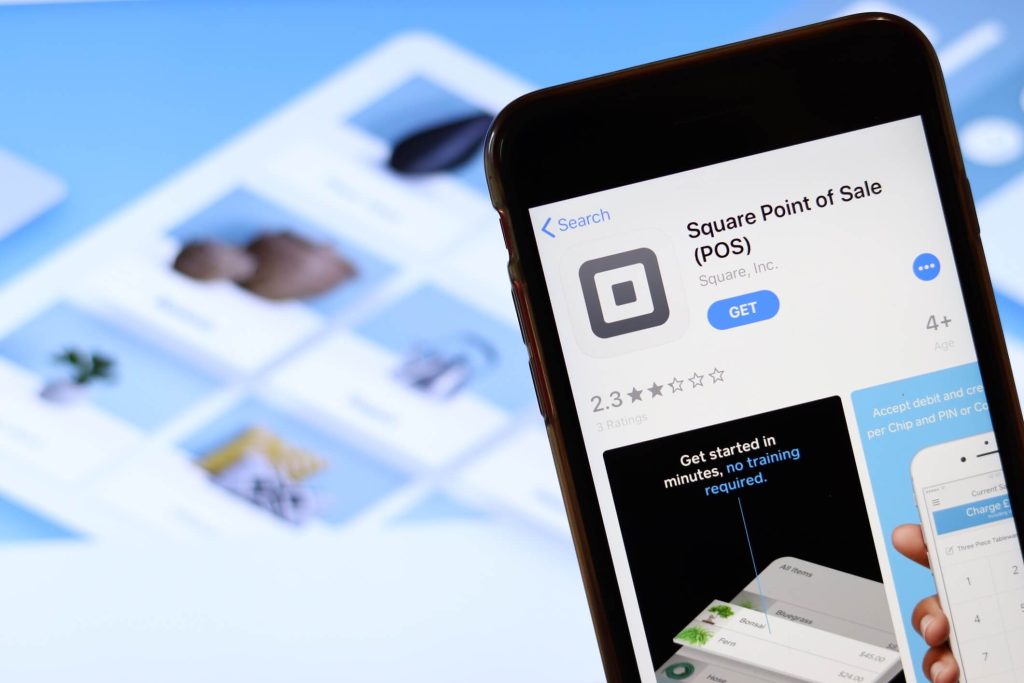Square is a popular payment processing platform that offers a range of services to help businesses accept payments and manage their finances. However, understanding Square pricing structure and fees can be a daunting task for many business owners. In this comprehensive guide, we will break down Square pricing and fees for 2024, providing you with all the information you need to make an informed decision.
What is Square?

Square is a financial services and digital payment company that was founded in 2009 by Jack Dorsey, the co-founder and CEO of Twitter. It offers a suite of products and services designed to help businesses manage their payments, including point-of-sale (POS) systems, hardware devices, online store platforms, and financing options. Square’s user-friendly interface and affordable pricing have made it a popular choice among small businesses, independent sellers, and even larger enterprises.
Why is understanding Square pricing and fees important for businesses?
Understanding Square pricing and fees is essential for businesses for several reasons. Firstly, it allows businesses to accurately calculate their costs and budget effectively. By knowing the fees associated with each transaction or service, businesses can determine their profit margins and make informed pricing decisions. Secondly, understanding Square pricing and fees helps businesses compare it with other payment processors to ensure they are getting the best value for their money. Lastly, being aware of Square pricing and fees enables businesses to optimize their costs and identify potential areas for savings.
Understanding Square Pricing Structure
Square offers a transparent and flexible pricing structure that caters to businesses of all sizes and types. In 2024, Square continues to offer a variety of pricing plans to meet the diverse needs of its customers. The most popular plan is the Square Point of Sale (POS) plan, which is suitable for brick-and-mortar businesses. This plan charges a flat rate per transaction, making it easy for businesses to calculate their costs. Additionally, Square offers specialized pricing plans for eCommerce businesses, restaurants, and professional services.
When comparing Square pricing with its competitors, it is important to consider the specific needs of your business. While some competitors may offer lower transaction fees, they may lack the comprehensive features and integrations that Square provides. Square pricing is designed to be transparent and predictable, allowing businesses to budget effectively and avoid unexpected costs.
Transaction Fees: How Much Does Square Charge?
One of the most important factors to consider when evaluating Square pricing is the transaction fees. Square charges a flat rate of 2.6% + $0.10 per transaction for in-person payments, and 2.9% + $0.30 per transaction for online payments. This pricing model is advantageous for businesses with low average transaction values, as it eliminates the need to pay a percentage-based fee.
However, for businesses with high average transaction values, Square’s flat rate pricing may not be the most cost-effective option. In such cases, it may be worth considering other payment processors that offer lower percentage-based fees.
Square’s Subscription Plans: Which One is Right for You?
In addition to transaction fees, Square offers subscription plans that provide businesses with additional features and benefits. The two main subscription plans offered by Square are the Square for Retail plan and the Square for Restaurants plan.
The Square for Retail plan is designed for businesses that operate in a retail environment, offering features such as inventory management, employee management, and advanced reporting. The Square for Restaurants plan, on the other hand, is tailored to the needs of restaurants and includes features like table management, menu customization, and online ordering.
When choosing a subscription plan, it is important to consider the specific needs of your business and evaluate whether the additional features provided by the plan are worth the extra cost.
Additional Fees and Charges to Consider
While Square’s transaction fees and subscription plans are the main components of its pricing structure, there are also additional fees and charges that businesses should be aware of. Some of these fees include chargeback fees, which are incurred when a customer disputes a transaction, and instant deposit fees, which allow businesses to access their funds immediately instead of waiting for the standard deposit time.
It is important to carefully review Square’s fee schedule and understand all the potential charges that may apply to your business. By doing so, you can accurately estimate your payment processing costs and avoid any unexpected surprises.
Square’s Hardware Costs: What to Expect
In addition to its payment processing services, Square also offers a range of hardware options to help businesses accept payments. These hardware options include point of sale (POS) systems, card readers, and the Square Register.
Point of Sale (POS) Systems: Pricing and Features
Square’s POS systems are designed to provide businesses with a comprehensive solution for managing their sales and inventory. The pricing for Square’s POS systems varies depending on the specific model and features included. For example, the Square Stand, which turns an iPad into a fully functional POS system, starts at $199, while the Square Register, which is a standalone POS system with a built-in receipt printer and customer display, starts at $799.
When choosing a POS system, it is important to consider the specific needs of your business and evaluate whether the features provided by the system justify the cost.
Card Readers and Payment Devices: Options and Costs
Square offers a variety of card readers and payment devices to suit different business needs. The most basic card reader, the Square Reader, is available for free and allows businesses to accept magstripe card payments. For businesses that need to accept chip and contactless payments, Square offers the Square Reader for Contactless and Chip, which is available for $49.
In addition to these basic card readers, Square also offers more advanced payment devices, such as the Square Terminal and the Square Register. These devices provide businesses with additional features, such as a built-in receipt printer and customer display, but come at a higher cost.
Square Register: A Comprehensive Overview
The Square Register is Square’s flagship POS system, offering businesses a comprehensive solution for managing their sales and inventory. The Square Register features a large touchscreen display, a built-in receipt printer, and a customer display, making it a powerful tool for businesses of all sizes.
The pricing for the Square Register starts at $799, which includes the hardware and a one-year subscription to Square’s software. After the first year, businesses are required to pay a monthly subscription fee of $60 to continue using the Square Register.
Square Pricing and Fees Compared to Competitors
When evaluating Square pricing and fees, it is important to consider how they compare to those of its competitors. In this section, we will compare Square pricing and fees to those of PayPal, Stripe, and Shopify.
Square vs. PayPal: Which Offers Better Value?
Both Square and PayPal offer payment processing services for businesses, but their pricing models differ. While Square charges a flat rate per transaction, PayPal charges a percentage-based fee that varies depending on the transaction volume.
For businesses with low average transaction values, Square’s flat rate pricing may be more cost-effective. However, for businesses with high average transaction values, PayPal’s percentage-based fee may result in lower processing costs.
Square vs. Stripe: A Comparison of Pricing Models
Stripe is another popular payment processing platform that offers businesses a range of features and benefits. When comparing Square pricing to Stripe’s, it is important to consider the specific needs of your business and evaluate which pricing model is more advantageous.
Square’s flat rate pricing may be more suitable for businesses with low average transaction values, while Stripe’s percentage-based fee may be more cost-effective for businesses with high average transaction values.
Square vs. Shopify: Which Platform is More Cost-Effective?
Shopify is a comprehensive e-commerce platform that offers businesses a range of features to help them sell products online. When comparing Square pricing to Shopify’s, it is important to consider the specific needs of your business and evaluate which platform provides better value.
Square pricing is more suitable for businesses that primarily operate in a physical retail environment, while Shopify’s pricing is more suitable for businesses that primarily operate online.
Frequently Asked Questions (FAQs) about Square Pricing and Fees
In this section, we will address some frequently asked questions about Square pricing and fees.
Q.1: How often does Square update its pricing structure?
Answer: Square periodically updates its pricing structure to ensure that it remains competitive and aligned with industry standards. It is important to regularly check Square’s website or contact their customer support for the most up-to-date pricing information.
Q.2: Are there any hidden fees with Square?
Answer: Square strives to be transparent with its pricing and fees, and there are no hidden fees associated with its payment processing services. However, it is important to carefully review Square’s fee schedule and understand all the potential charges that may apply to your business.
Q.3: Can I negotiate lower transaction fees with Square?
Answer: Square’s transaction fees are non-negotiable, as they are set based on the specific pricing structure. However, Square does offer discounts for high-volume businesses, so it may be worth reaching out to their customer support to discuss your specific needs.
Q.4: What happens if I exceed my monthly processing limit?
Answer: If you exceed your monthly processing limit with Square, you may be subject to additional fees or restrictions. It is important to carefully monitor your processing volume and consider upgrading to a higher subscription plan if necessary.
Q.5: Does Square offer any discounts for high-volume businesses?
Answer: Yes, Square offers discounts for high-volume businesses. The specific discount rates may vary depending on the volume of transactions processed, so it is worth reaching out to Square’s customer support to discuss your specific needs.
Conclusion
In conclusion, Square offers a transparent and straightforward pricing structure that is designed to meet the needs of businesses of all sizes. By understanding Square’s transaction fees, subscription plans, and additional fees and charges, you can accurately estimate your payment processing costs and make an informed decision.
When evaluating Square pricing and fees, it is important to consider how they compare to those of its competitors, such as PayPal, Stripe, and Shopify. By carefully evaluating your specific needs and comparing the pricing models of different payment processors, you can choose the option that provides the best value for your business.
Remember to regularly check Square’s website or contact their customer support for the most up-to-date pricing information, as Square periodically updates its pricing structure to remain competitive in the market.
